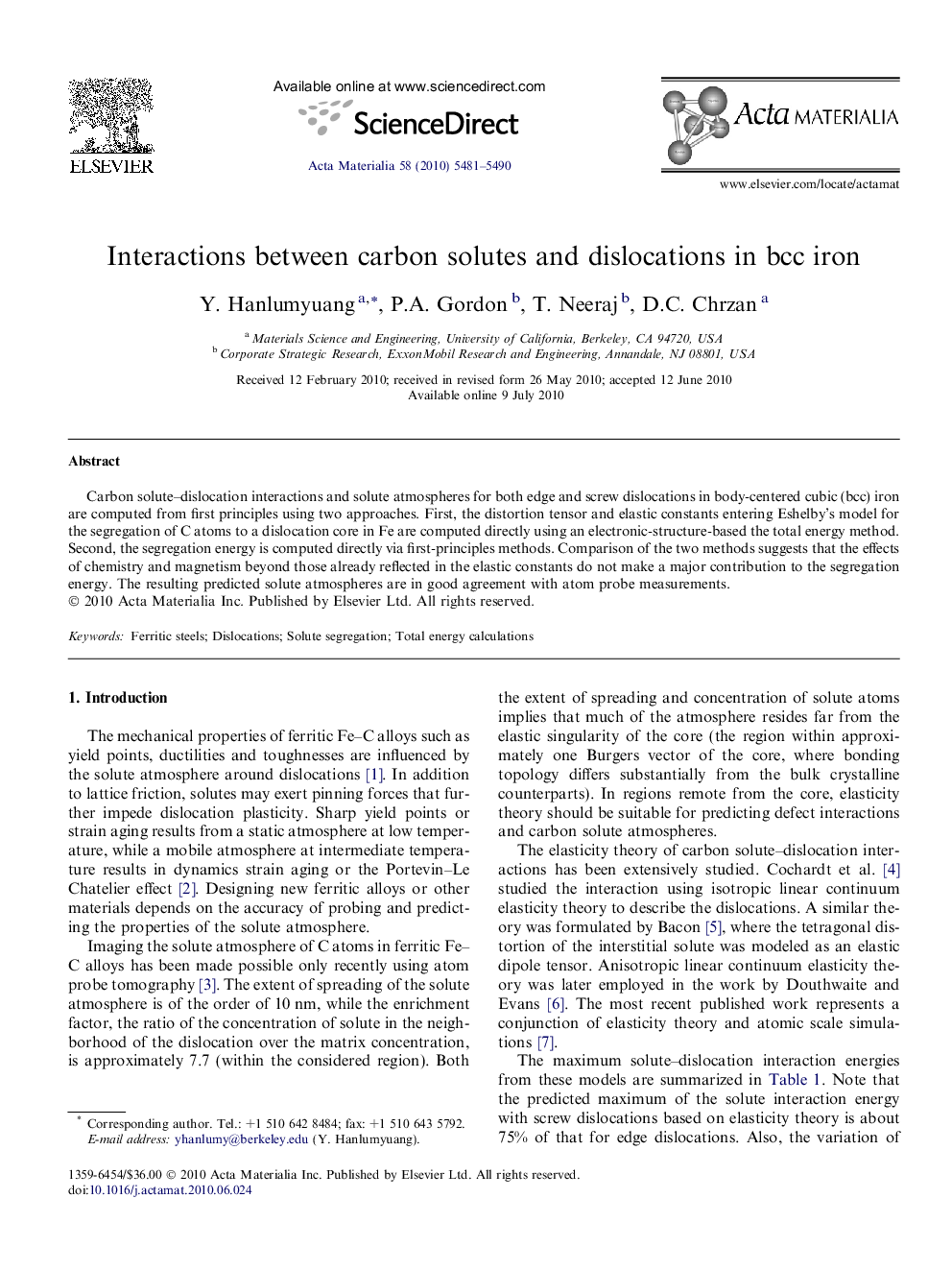| Article ID | Journal | Published Year | Pages | File Type |
|---|---|---|---|---|
| 1448172 | Acta Materialia | 2010 | 10 Pages |
Carbon solute–dislocation interactions and solute atmospheres for both edge and screw dislocations in body-centered cubic (bcc) iron are computed from first principles using two approaches. First, the distortion tensor and elastic constants entering Eshelby’s model for the segregation of C atoms to a dislocation core in Fe are computed directly using an electronic-structure-based the total energy method. Second, the segregation energy is computed directly via first-principles methods. Comparison of the two methods suggests that the effects of chemistry and magnetism beyond those already reflected in the elastic constants do not make a major contribution to the segregation energy. The resulting predicted solute atmospheres are in good agreement with atom probe measurements.
